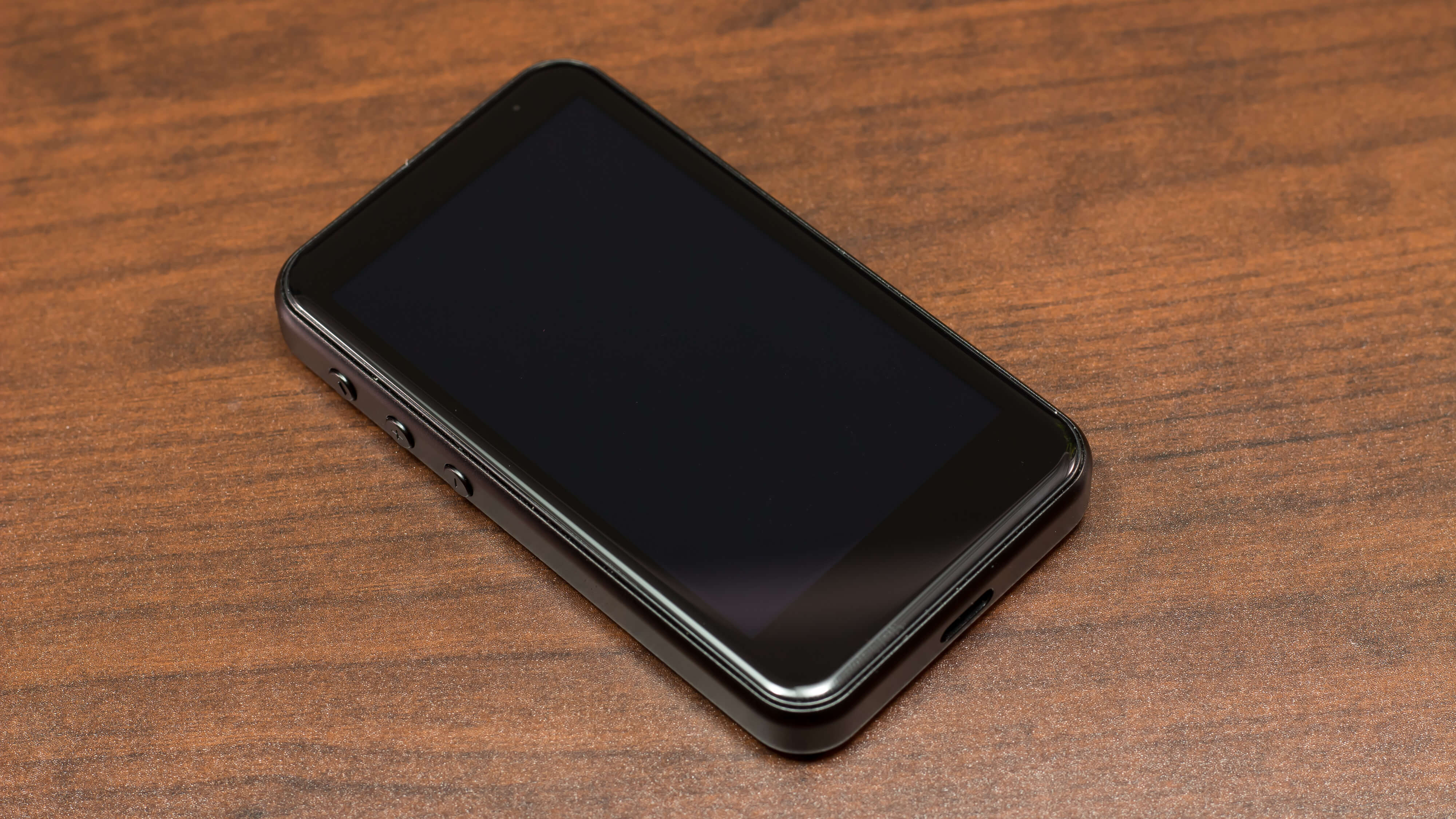
Specs
- SNR: ≥118dB
- THD+N: <0.002%
- Output Impedance: <2Ω
- Output power: ≥70mW @ 32-ohm (single-ended)
- Battery Capacity: 1600mAh
What’s In The Box?
- FiiO M6
- USB Type-C charging / data cable
- Soft silicon case
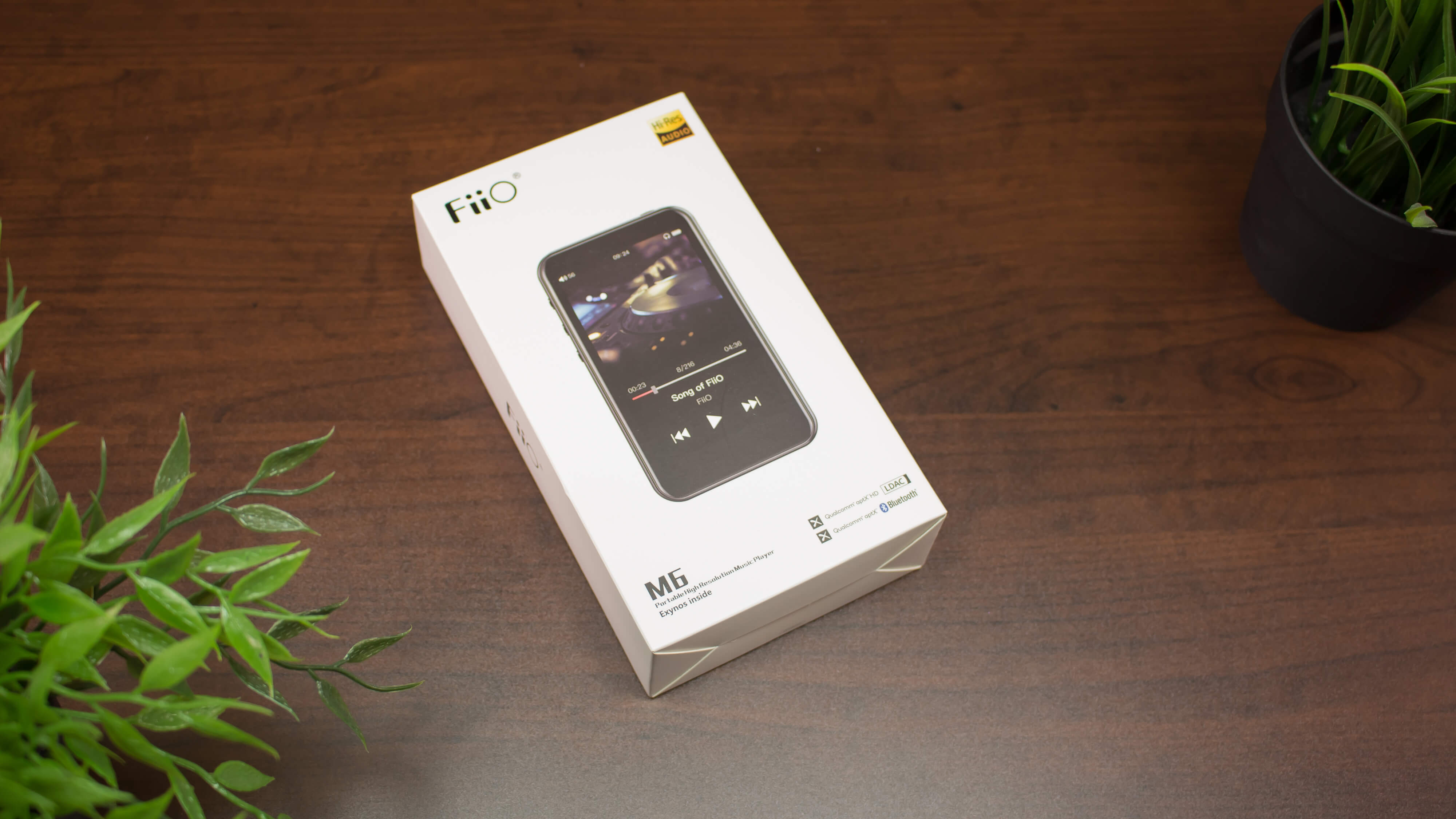
Accessories
FiiO usually includes a few extras with their products, and the same holds true for the M6. Let’s not forget that the M6 is a very affordable player, so for FiiO to include what is a relatively good quality soft silicon case is very much appreciated.
The last thing you want is to scratch up your shiny new toy.
Other than the case we just get a Type-C charging / data cable.
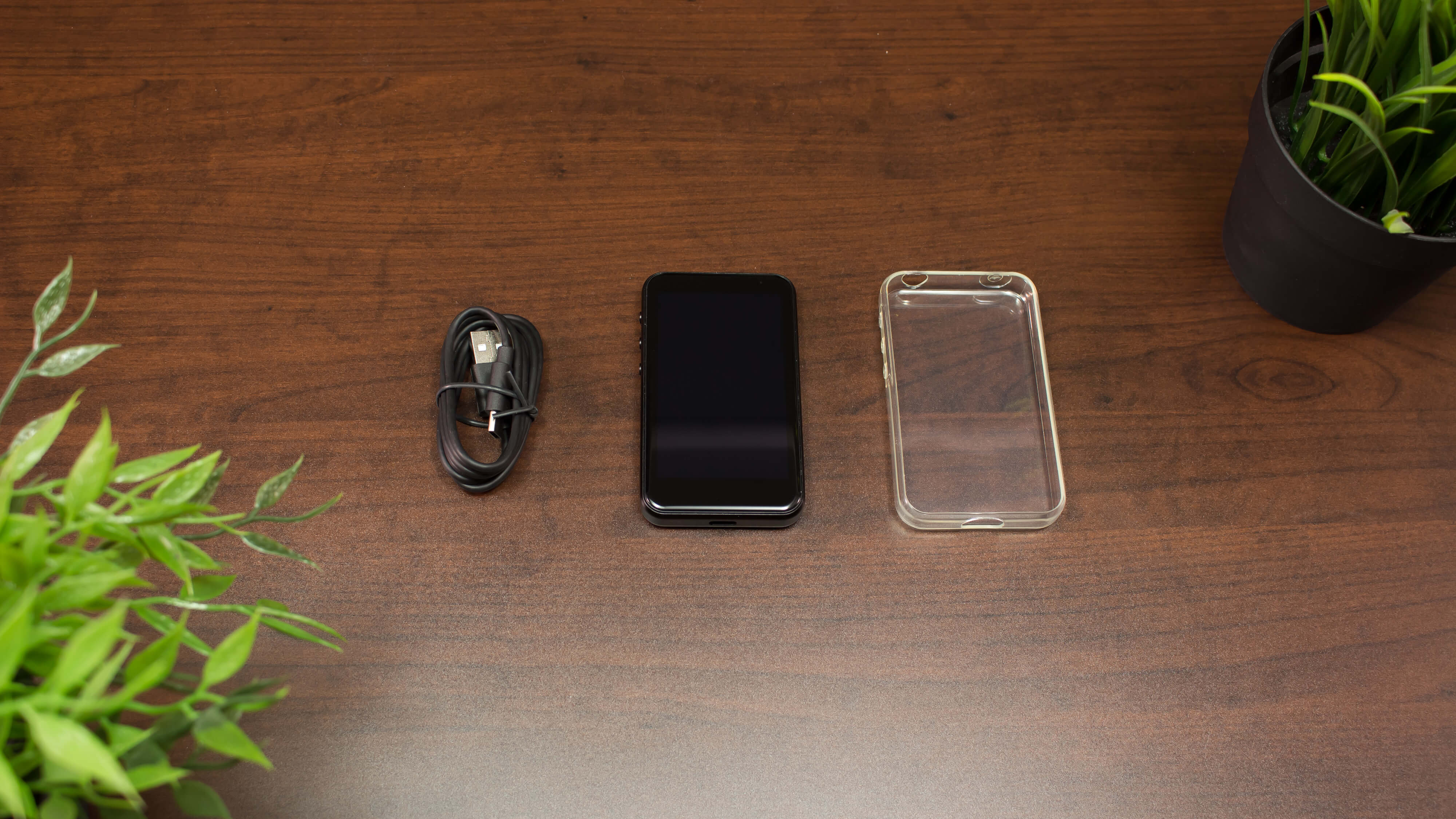
Design
The M6 is not the smallest player that FiiO has ever released, that title still belongs to the original M3, but the M6 is their smallest Android-based player.
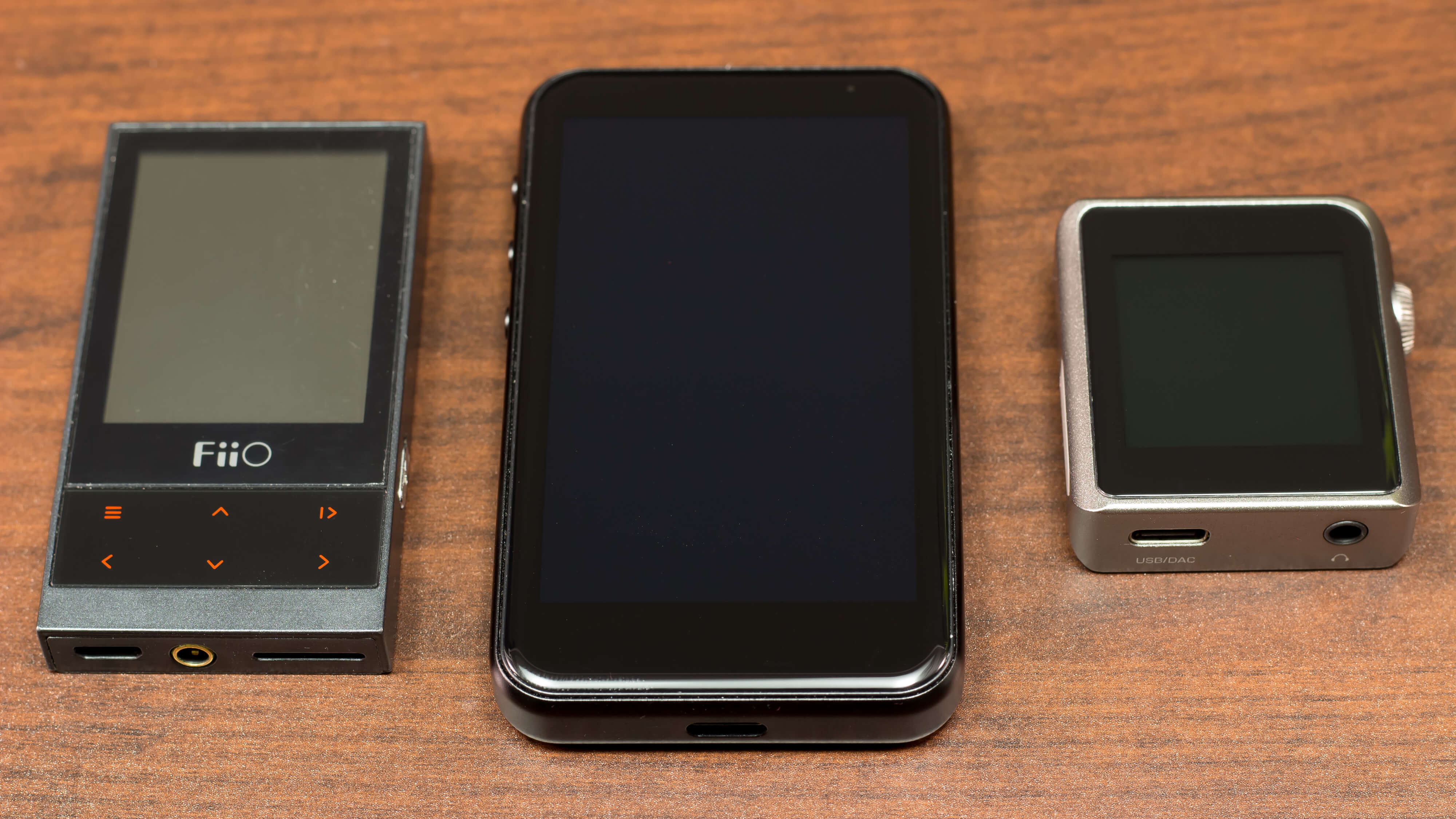
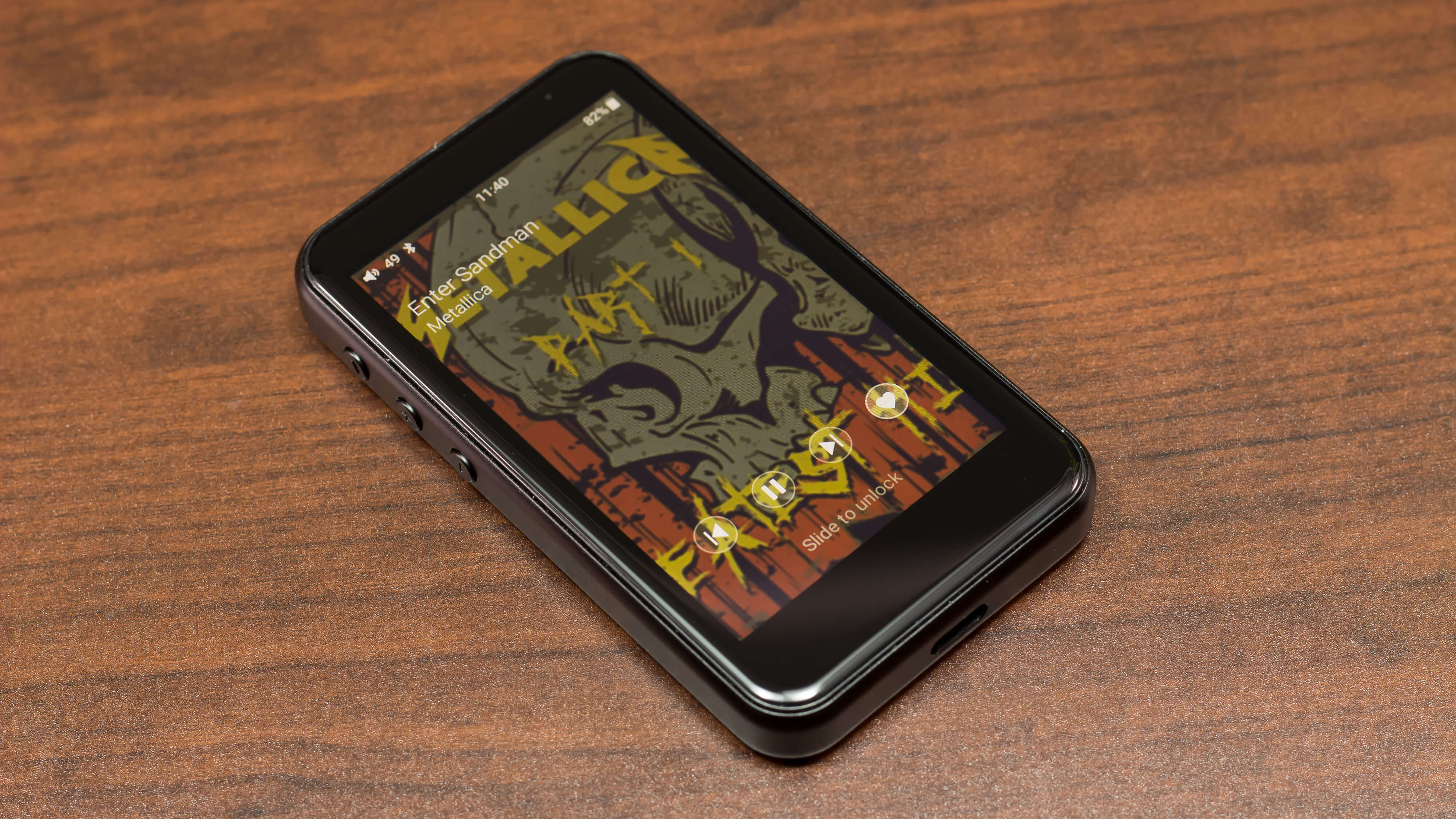
It’s around 18% bigger than the new M3K, but roughly 33% smaller than the M9. But, it’s not nearly as compact as the Shanling M0, which is less than half the size of the M6.
But a comparison between the M6 and M0 isn’t really fair since the M0 is so incredibly small, but more important is that the M6 has every feature that the M0 has, and more.
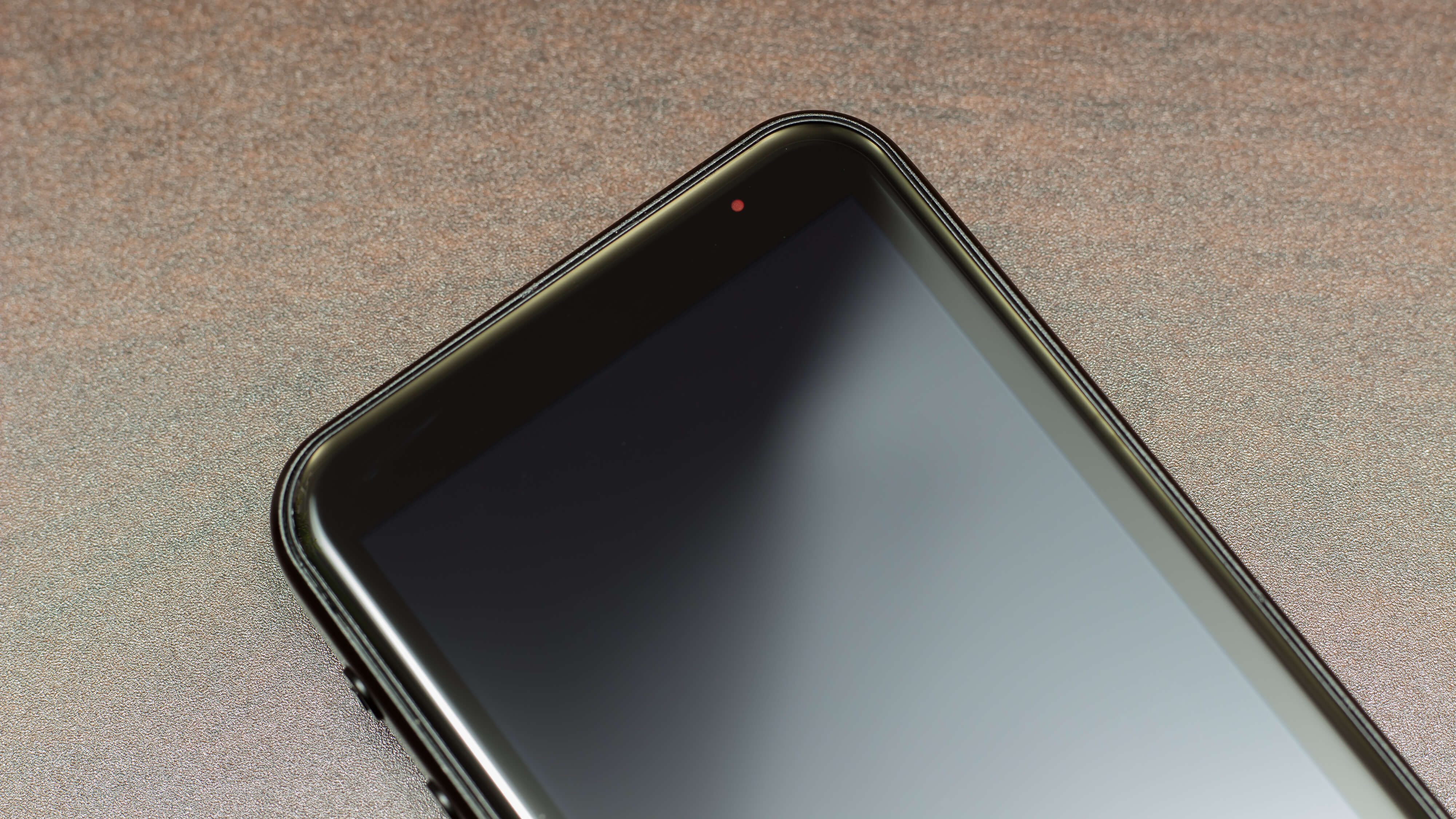
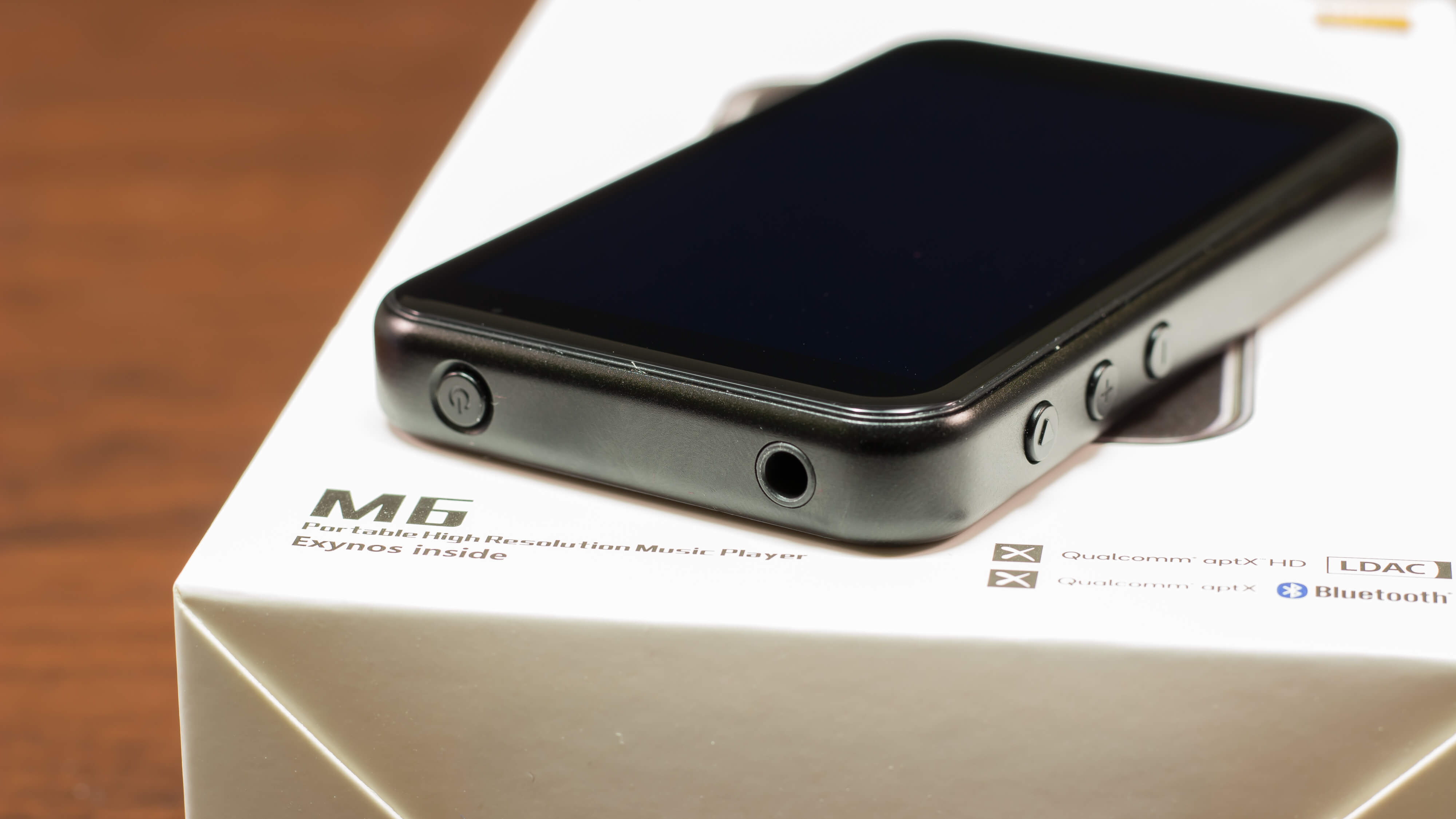
On the front we’ve got a beautiful 3.2-inch touch display which is produced by LG. It’s got a resolution of 480 x 800 pixels which gives a pixel density of 292 PPI.
I speak under correction, but it seems very likely that the M6 uses the exact same display as the M9.
If we look closely, there’s also a small LED towards the top-right corner which lights up when the device is being powered-on, as well as when it’s being charged.
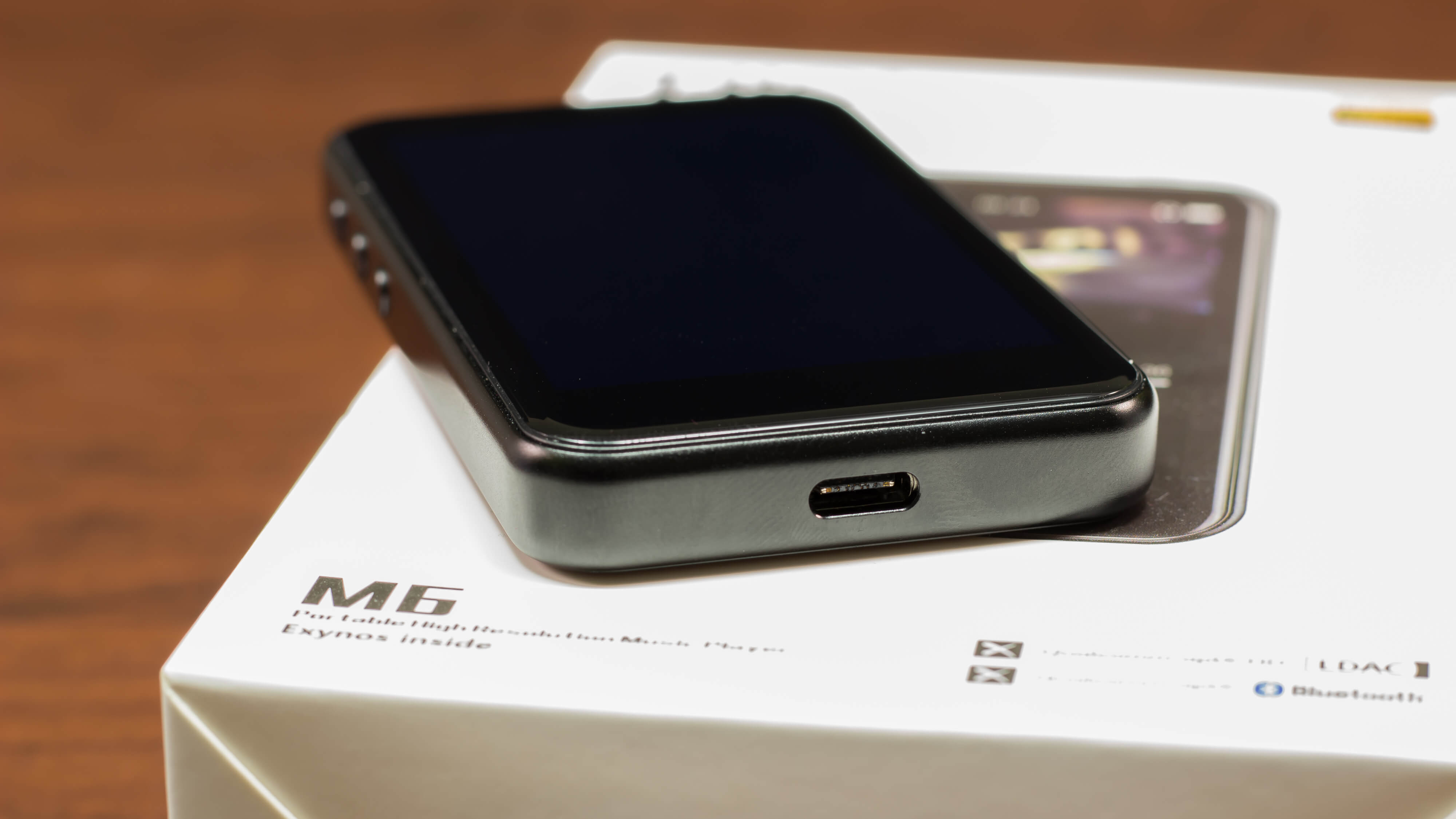
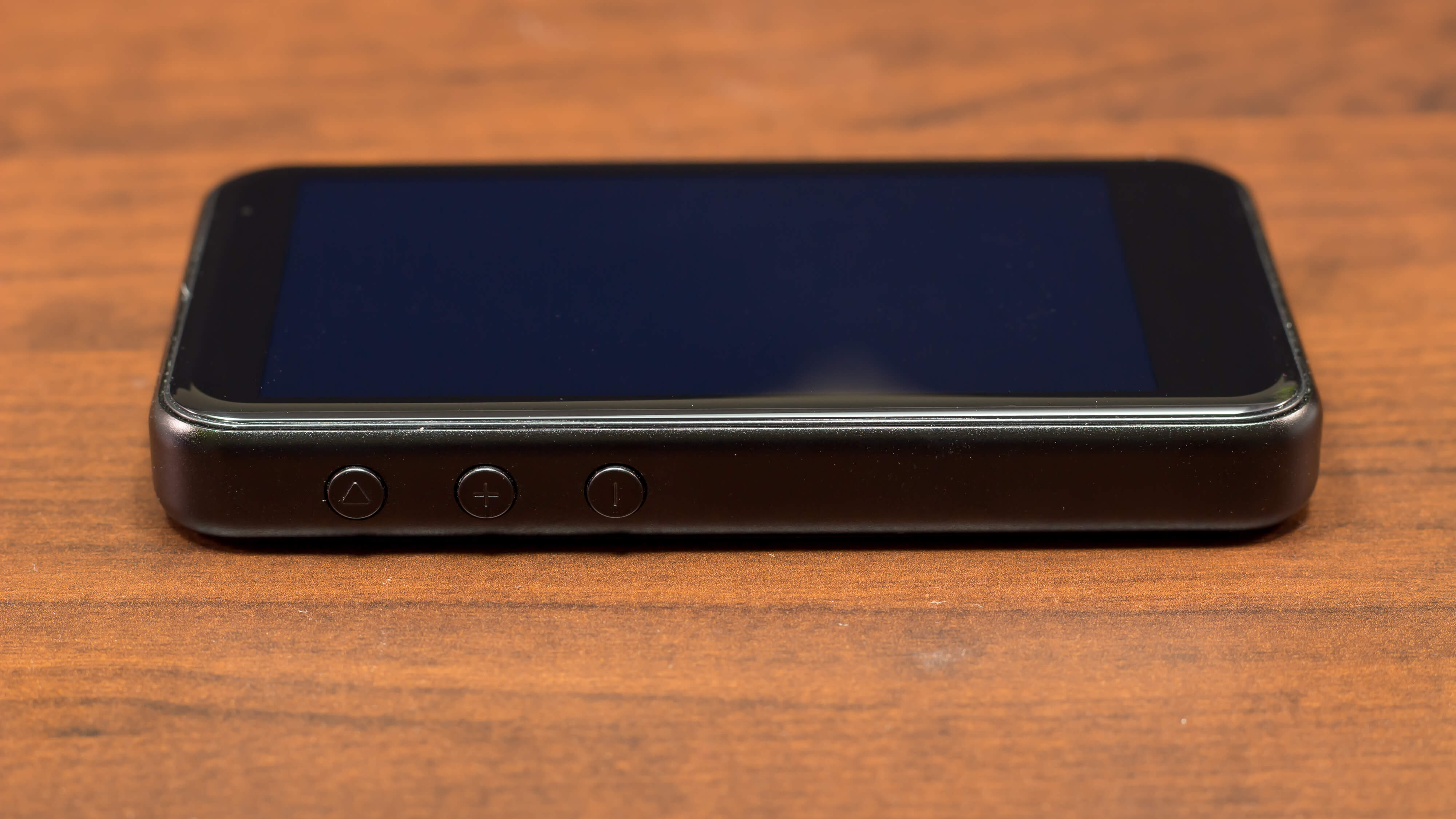
Along the top sits the 3.5mm single-ended headphone jack and the power button, whereas the bottom edge houses a USB Type-C connector. It’s important to note that the Type-C connector allows you to not only transfer data to the M6, but you can also use the M6 as a dedicated DAC for your computer, as well as allowing you to connect an external DAC device should you want to use the M6 only as a transport.
The left side has the play/pause and volume buttons, and over on the right side sits the single microSD card slot.
The back features a glass panel which admittedly does give it a more premium feel in the hand, but it does of course show fingerprints very easily, especially with the black colour underneath it. FiiO did install a glass protector on the rear though, so that should delay the effects day-to-day wear away on the actual glass panel.
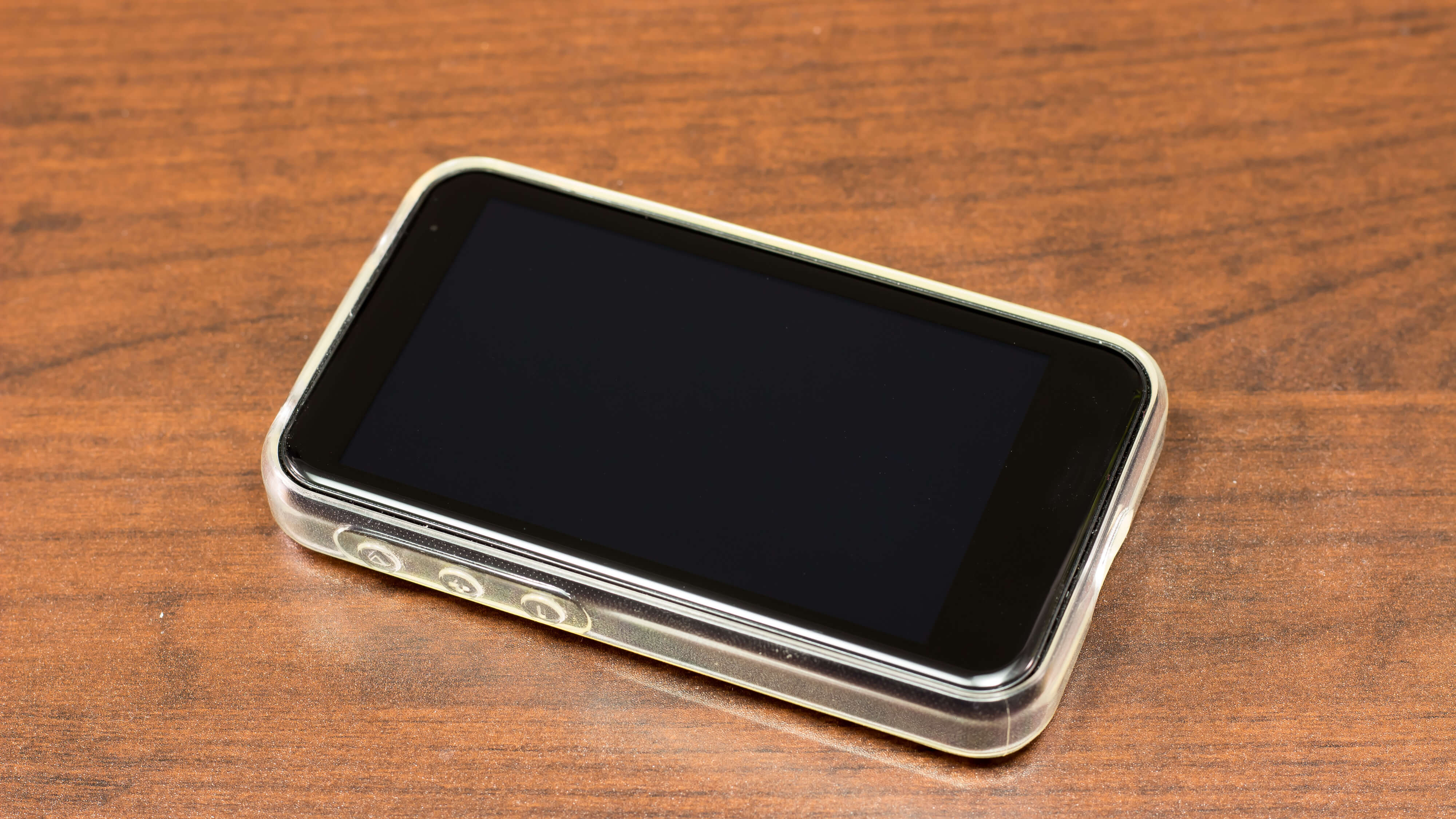
Personally, I would just use the included silicone cover to protect the entire device though.
Overall, the design feels really good in the hand and, unlike the M9 feels perfectly fine to use one-handed and in either hand.
The similarities between the M6 and M9 can be found under the hood too as the engine behind it all is again the Exynos 7270 which clocks in at 1GHz and sits alongside 768MB of RAM. Of course, this combination is way less powerful than even a budget smartphone, but keep in mind that these audio players don’t have to process nearly as much as a smartphone, in which case using such an efficient CPU and small amount of RAM is totally appropriate.
Functionality / UI
If you’ve handled the M7 or the M9, you will likely feel right at home with the M6.
We are getting the same slimmed and trimmed customised version of Android, so the home layout and the entire operation remains the same.
It’s easy enough to use and navigate although you may have to get used to the swiping gestures if you don’t have any experience with either the M7 or M9.
Since there are no dedicated or software buttons for jumping back or to the home screen, this is done by swiping gestures.
A swipe up from the left will take you back one step, whereas a swipe up from the right will let you quickly jump to the home screen.
So whilst it might not be quite as intuitive as the hardware or software buttons that you’d find on a regular Android device, it’s something that you can get used to fairly quickly.
Overall, I think FiiO did a decent job so far with regards to creating a clean UI, and just keeping things focused on being an easy-to-use music player.
But, since the M6 seems to share the same platform as the M7 and M9, what this also means is that it comes with the same software limitations and, unfortunately, the same software issues that I had found on the other 2 devices.
The most apparent limitation is because of the processor used and the slimmed-down version of Android, FiiO has to approve various apps before you can install them. A complete list of whitelisted apps can be found here.
But, when we start talking about software issues, well then I’m not quite sure what FiiO’s deal is here. Why do they insist on developing new products before fixing software issues of existing products? Especially if we are talking about devices like the M7, M9 and M6 where they share the same hardware and software platform.
Surely it makes more sense to fix all the little software bugs on the existing product so that any other product that then precedes it and which is built around the same hardware and software platform can then be sold to customers in a bug-free state. That makes sense, right?
Now, to clarify, the software issues I’m talking about are not what I would consider to be deal-breakers. They are just little things that can be a bit annoying or unintuitive.
Since I’ve already covered these in my reviews of both the M7 and M9 I’m just gonna link you to those reviews so you can have a look at what it is that I’m talking about.
The last issue I think I need to mention has to do with the lack of dedicated hardware playback buttons.
This is in fact a very similar issue I had with the M3K. You see, whilst there is a dedicated play/pause button, in order to skip tracks you have to rely on the multi-functional volume buttons. But the problem here is that the volume buttons work only as volume buttons when the display is on, so the only way to change tracks would be form the music player app itself (or from the pull down notification drawer if the app supports it).
Then, when the display is off, you have to press the respective volume buttons repeatedly in order to increase or decrease the volume, you can’t just press and hold the button because that would then resort to skipping the track forward or backwards.
I wouldn’t call this a deal-breaker, just mildly annoying and unintuitive.
Sound
As far as the sound quality is concerned, I think the fairest way for me to judge this is to compare and contrast what I’m hearing between the M6 and the Shanling M0 since both of them are built around similar DAC setups.
To me, the M0 sounds perhaps a touch flatter, whereas the M6 seems to have this slight sense of warmth in comparison. It’s not enough for me to really call it warm, but it’s there, slightly, just there in the background.
Overall, I’m very happy with how the M6 sounds. It’s not going to extract the tiniest of details or give you the most realistic stereo image, but those 2 factors are more dependant on the headphones anyways. The M6 does its job, and I feel that, given the price, it does it damn well.
I suppose I can’t say for certain, but I doubt there will be many people, if any, that will listen to this thing and say that it’s doing something funky with the sound that they don’t like.
It just has a nice and relaxing signature without sounding blatantly rolled-off.
Value
There’s just no getting around it, the M6 is a fantastic device for the money. Keep in mind that whilst it might cost $40 more than the Shanling M0 (another device I highly recommend), it definitely does give you greater functionality.
The M6 can do very nearly everything the M0 can, and what it can’t yet do simply requires a firmware update. But there are other functions that come on the M6 that no software update could bring to the M0.
The M0 beats anything and everything when it comes to a battle of size, but the M6 is the smallest and most affordable full-featured Android-based DAP currently available.
For just $150 you’re getting a beautiful 3.2-inch touch display, compatibility with a wide range of Bluetooth formats, and access to various streaming services. What’s more, the M6 also gives iOS users the option to connect the M6 to their Apple device via AirPlay.
There are players out there from the likes of Astell&Kern that cost multiple times what the M6 does but struggle to offer half as much functionality.
Of course, your mileage may vary and so may your needs, but I honestly do feel that the M6 is just about the perfect DAP for my personal needs. The sound quality is perfectly acceptable for on-the-go scenarios, and it’s got enough power for most IEMs.
But, where it really shines is as an easy-to-use and compact transport for hooking up to something like FiiO’s own Q5, the Micro iDSD Black Label, the Mojo, or even the Hugo 2.
But hell, it stacks up beautifully with the little A3 amp too if all you need extra is a bit more juice and perhaps a bass boost.
I do still wish that we got proper dedicated playback controls, especially for using it as a transport, but I suppose for $150 we can’t have everything, right?
The alternative would be the M6’s bigger brother, the M9, which has those dedicated buttons and a few more features, but it does also cost double what the M6 does.
So I think, as a total package, at least currently, the M6 might just pack the most bang-for-buck value of all the dedicated portable players out there.
The Shanling M0 was my previous pick for carrying the most value, but the M6 is just so much more capable and, despite being larger, a more comfortable device to use.
I think the M0 will still reign supreme for the time being if you require ultimate portability, but the M6 is a very clear step up in both functionality and usability.
It really is a sort of one-stop shop for practically all of your portable audio needs.

